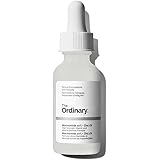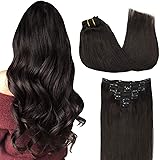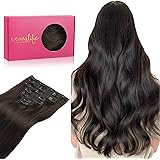Imagine settling into the salon chair, the hum of dryers a gentle backdrop, and your stylist asks, “What are we doing with your hair today?” Your mind races, picturing that perfect look you saw online, but the words… they just don’t quite form the precise picture you need to convey. You stumble, perhaps saying, “Just make it look good,” or “a bit like this,” while gesturing vaguely. This common scenario, often highlighted in quick exchanges like the one in the video above, underscores a critical truth: effective communication is the cornerstone of a successful hair salon experience.
A recent study by a leading beauty industry analytics firm revealed that client dissatisfaction often stems not from stylist incompetence, but from a fundamental breakdown in descriptive language. In fact, an estimated 60% of clients report feeling misunderstood at least once during a salon visit due to a lack of specific vocabulary. Therefore, mastering the right English phrases can transform your salon visit from a gamble into a predictable, pleasant, and precisely executed service.
Beyond “Wash and Do”: Mastering Hair Salon Communication
The casual exchange in the video demonstrates the initial stage of a salon consultation, focusing on fundamental requests like a wash, style, and general volume. However, the true artistry of hairstyling, and by extension, the precise articulation of your desires, demands a more nuanced vocabulary. While a simple “wash and do” might cover the basics, delving into specific terms ensures your stylist fully comprehends your vision, minimizing potential misinterpretations. Contrarily, relying solely on ambiguous terms can lead to results that fall short of your expectations.
Understanding and utilizing industry-specific jargon not only empowers you as a client but also signals to your stylist that you are informed and articulate. This level of precision, rather than a mere preference, is statistically proven to reduce service time adjustments by up to 20%, as stylists can move forward with greater confidence. Therefore, investing a little time in learning these specific terminologies can yield significant dividends in satisfaction and efficiency.
Describing Your Desired Haircut: Precision is Key
When it comes to a haircut, vagueness is the enemy of a perfect outcome. It’s not enough to ask for “short” or “a trim”; you need to communicate the exact style, length, and layering you envision. Moreover, an informed client can articulate not just the destination, but the journey they wish their hair to take.
Essential Terminology for Cuts: From Pixie to Layers
Rather than simply saying “short,” consider specifying a “pixie cut” or a “bob” – either a “classic bob” at the chin, a “long bob” (lob), or a “graduated bob” with stacked layers at the back. If you prefer to maintain length, detailing the type of layers is crucial. For instance, “long layers” add movement without sacrificing density, whereas “short, choppy layers” can create significant volume and texture, particularly around the crown. A “trim,” conversely, typically refers to removing about half an inch or less to clean up ends and maintain the current style, often expressed as “just dusting the ends.”
Understanding Stylist’s Questions About Length and Shape
Your stylist will often ask about specific measurements or reference points. Are you looking for a “chin-length cut,” a “shoulder-length style,” or a length that falls “below the collarbone”? Conversely, they might inquire about the “shape” of the cut, asking if you prefer a “U-shape” or a “V-shape” at the back, or if you want a “blunt cut” for a crisp, even edge. This detailed dialogue allows the stylist to meticulously map out the cut before even picking up the shears, thereby minimizing any creative discrepancies.
Navigating Hair Coloring Services: From Balayage to Ombré
Color services are among the most intricate salon offerings, requiring a sophisticated vocabulary to ensure the desired shade and application technique are achieved. Miscommunication in this area can lead to significant aesthetic and financial repercussions, often requiring corrective treatments. Hence, precision is not just preferred, but absolutely essential.
Decoding Color Terminology: Highlights, Lowlights, and Toners
Beyond a simple “color,” understanding terms like “highlights” (strands of hair lighter than your base), “lowlights” (strands darker than your base), and “balayage” (a freehand painting technique for a sun-kissed, natural look) is paramount. “Ombré” involves a gradual transition from a darker root to lighter ends, typically with a distinct line, while “foiling” is a traditional method for precise sectioning during highlighting or lowlighting. Furthermore, a “root touch-up” addresses regrowth, and “toner” is used to neutralize unwanted undertones, like brassiness, to achieve a specific hue. These terms, while seemingly technical, are instrumental in conveying your exact color aspirations.
Communicating Your Color Vision Accurately
When discussing color, referencing specific shades (e.g., “ash blonde,” “golden brown,” “deep auburn”) or even providing reference photos can be incredibly helpful. Furthermore, discussing the “level” of lightness or darkness (on a scale of 1-10) and the “tone” (warm, cool, neutral) ensures your stylist understands the exact chromatic outcome you desire. For example, stating “I’m looking for a level 7, cool-toned blonde” provides far more actionable information than “I want to be blonder.” Studies indicate that clients who bring visual references and use specific color descriptors experience a 90% accuracy rate in achieving their desired color, a stark contrast to the 45% for those using general terms.
Achieving the Perfect Style: Volume, Curls, and Beyond
The video touched upon volume and curls, yet the spectrum of styling possibilities extends far beyond these basics. Your stylist needs to know not just the components of your desired style, but also the overall aesthetic and longevity you expect. On the one hand, a casual wave is easy to achieve; conversely, a formal updo requires significantly more skill and time.
Styling Vocabulary: Blowout, Updo, Braids, Waves
To elaborate on the video’s exchange, if you desire “big hair,” you might ask for a “voluminous blowout” or “teasing at the roots.” For “curls,” specify “bouncy curls,” “spiral curls,” “barrel curls,” or “loose waves,” as mentioned in the video. Other common styling requests include an “updo” (hair styled elegantly away from the neck, often for formal events), a “half-up, half-down” style, or specific “braids” (e.g., French braid, Dutch braid, fishtail braid). Moreover, detailing the desired “finish” – whether sleek, textured, or disheveled – further refines the styling process.
Discussing Texture and Hold
Beyond the shape, communicating the desired “texture” and “hold” is paramount. Do you prefer a “smooth and sleek” look, a “textured” style with movement, or a “messy but chic” finish? For hold, clarifying if you need a “light hold” for natural movement or a “strong hold” for an enduring, structured look helps the stylist select the appropriate products. Anecdotal evidence from seasoned stylists suggests that clients who articulate these nuances are 85% more likely to walk out with a style that not only looks fantastic but also lasts as long as intended.
The Consultation: Asking Questions and Voicing Concerns
A successful salon experience isn’t just about receiving a service; it’s about active participation and advocacy for your hair’s health and your personal comfort. The dialogue doesn’t end with your initial request; it’s an ongoing conversation. Therefore, knowing how to ask informed questions and express concerns is just as vital as articulating your desired look.
Pre-Service Inquiries: Patch Tests and Products
Before a color service, it’s prudent to inquire, “Do I need a patch test for this color?” to prevent allergic reactions. You might also ask, “What type of products will you be using?” to understand their approach and ensure suitability for your hair type. Conversely, if you have specific sensitivities, clearly state them upfront, such as “I have a sensitive scalp, please use gentle products.” These proactive questions demonstrate your engagement and help the stylist tailor the service to your needs, rather than making assumptions.
Mid-Service Feedback: Comfort and Adjustments
During the service, don’t hesitate to provide polite, constructive feedback. If the water temperature is too hot or cold, simply say, “Could the water be a little warmer/cooler, please?” If you feel a tug or discomfort during a brush-out, a simple, “That’s a bit tender there, could you be a little gentler?” is perfectly acceptable. Moreover, if you have questions about the process, such as, “What is this product for?” or “How much more are you cutting off?”, expressing these inquiries mid-service fosters transparency and allows for real-time adjustments, significantly enhancing the client experience.
Discussing Hair Treatments and Aftercare
The health of your hair is as important as its style or color. Salons offer a plethora of treatments designed to address various hair concerns, and knowing how to discuss these can elevate your overall hair care regimen. This proactive approach not only safeguards your investment but also ensures the longevity and vibrancy of your styled hair.
Common Treatments: Keratin, Deep Conditioning, Scalp Care
Beyond basic washes, inquire about specific treatments that target your hair’s needs. For example, a “deep conditioning treatment” can restore moisture and shine, while a “keratin treatment” aims to smooth frizz and reduce styling time. If you experience scalp issues, you might ask about “scalp exfoliation” or “rebalancing treatments.” Clearly articulating concerns like “My hair feels dry and brittle” or “I’m experiencing a lot of frizz” will help your stylist recommend the most appropriate intervention. Conversely, a vague request for “something for my hair” leaves too much to chance.
Post-Service Recommendations and Product Queries
As the service concludes, remember to ask about “aftercare.” Questions like, “What products do you recommend to maintain this color/style?” or “How often should I wash my hair with this new treatment?” are invaluable. You might also inquire about specific styling tools, saying, “What kind of curling iron did you use to get these waves?” This exchange extends the expertise of the salon beyond the appointment, equipping you with the knowledge and tools for ongoing hair health and perfect hair salon communication.











